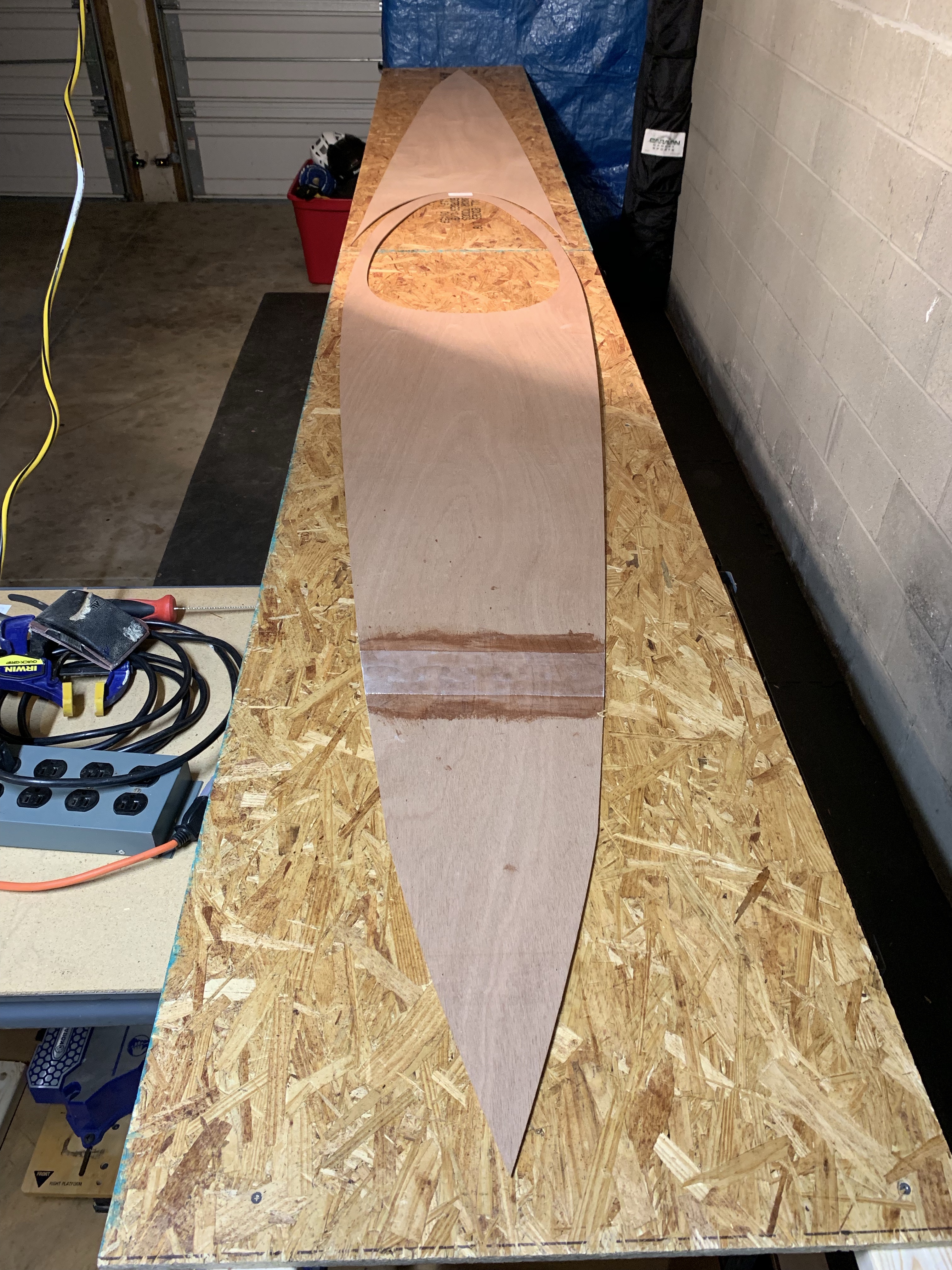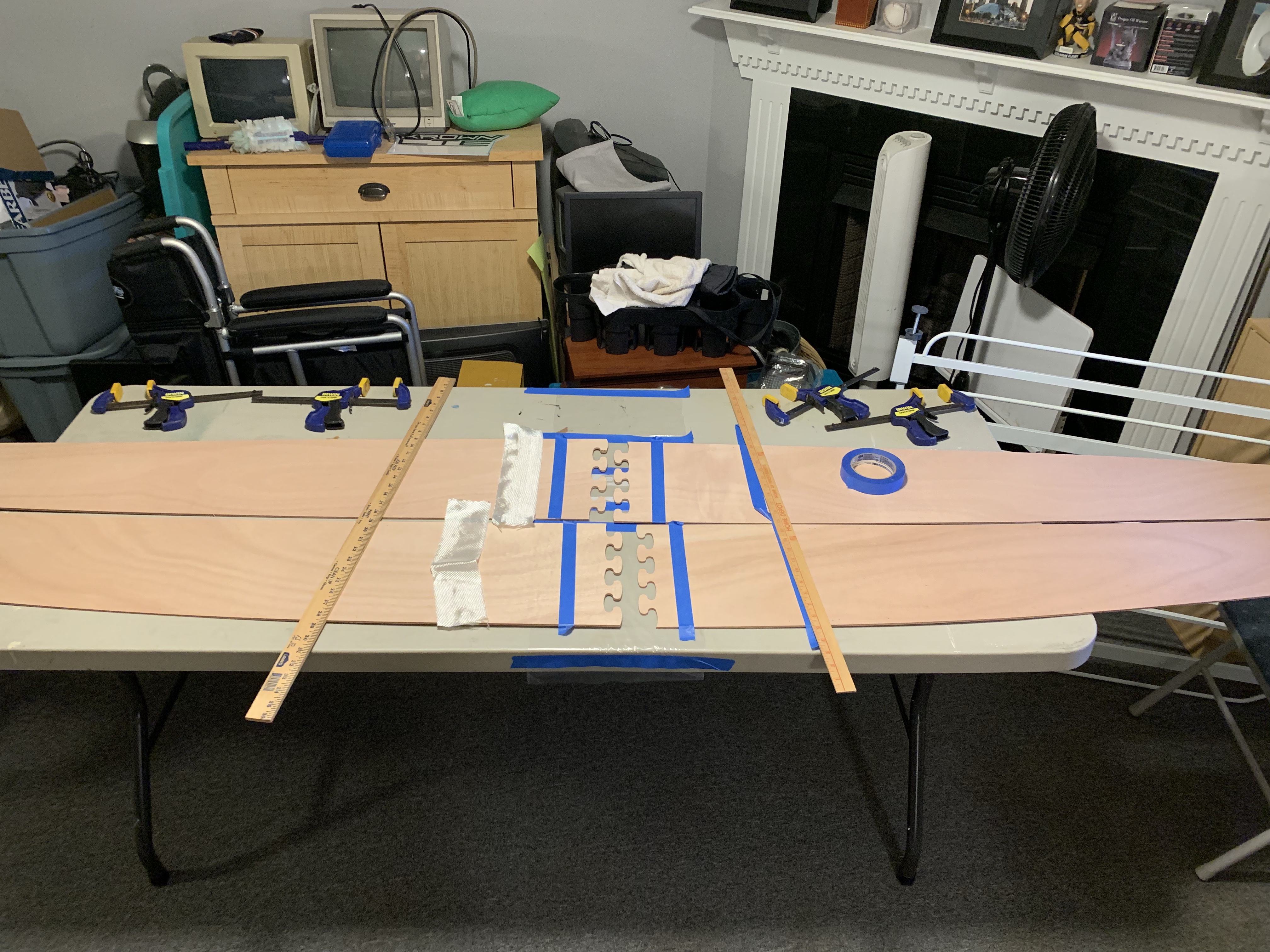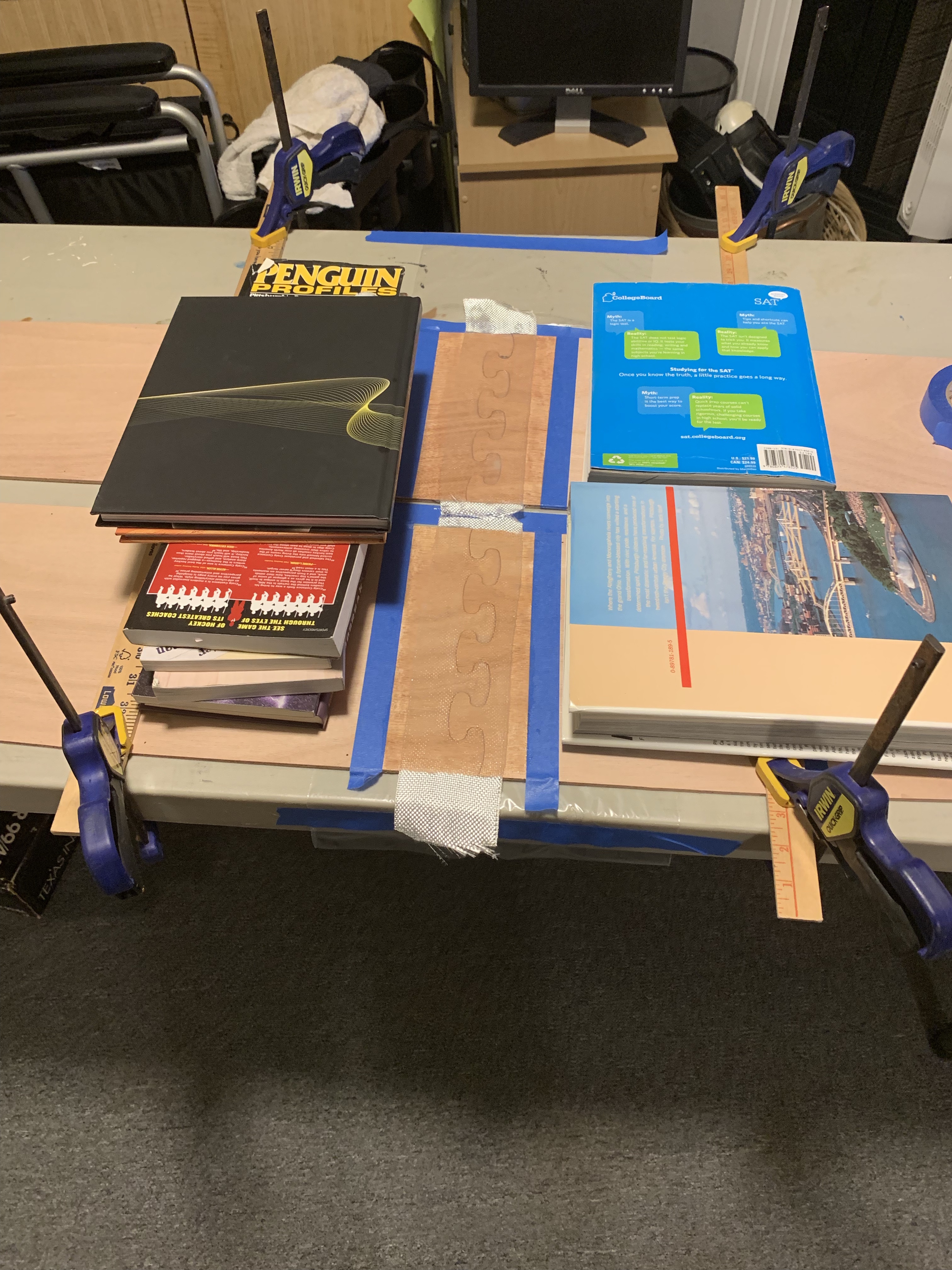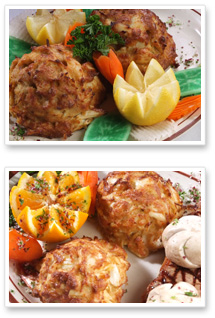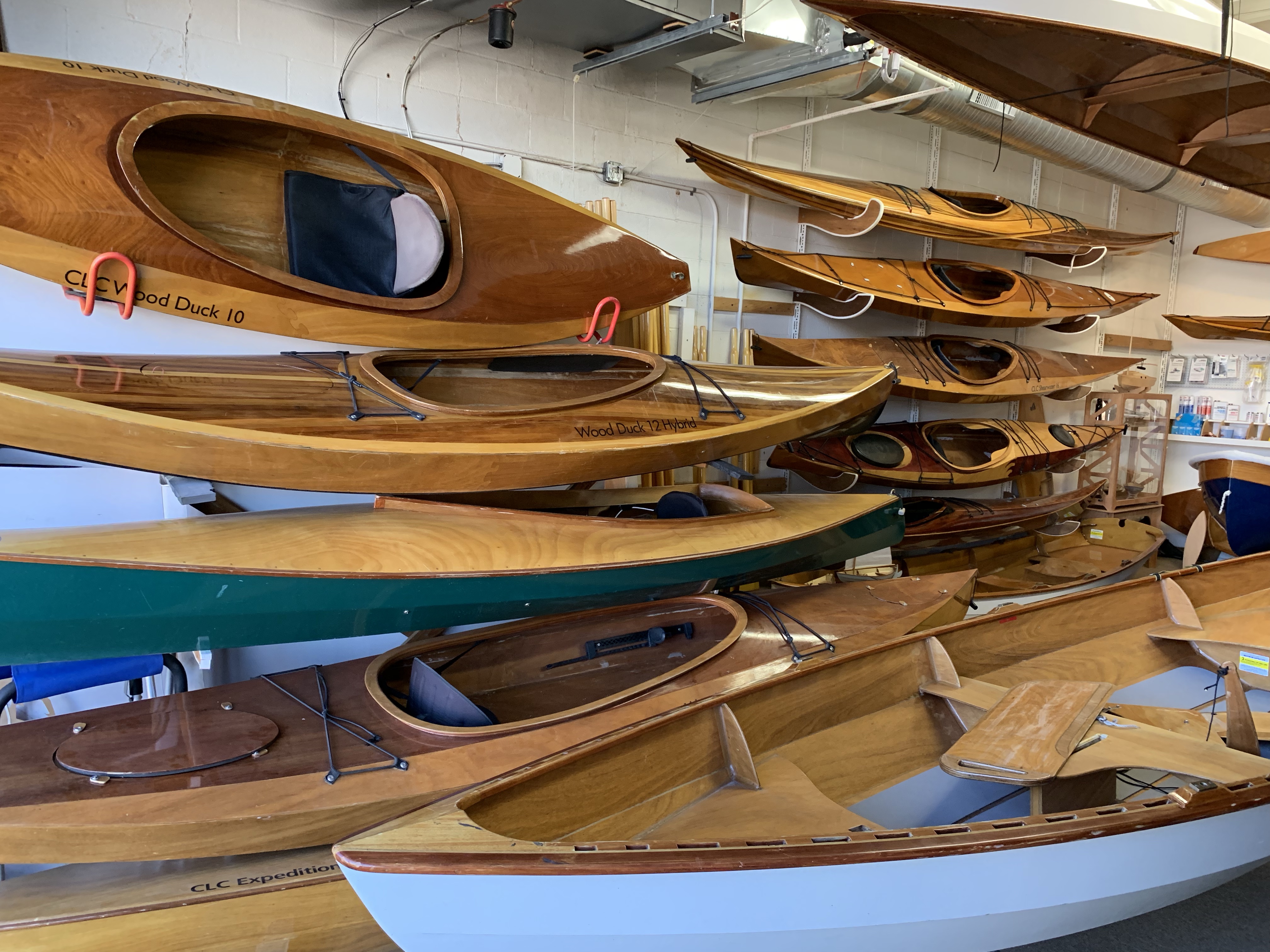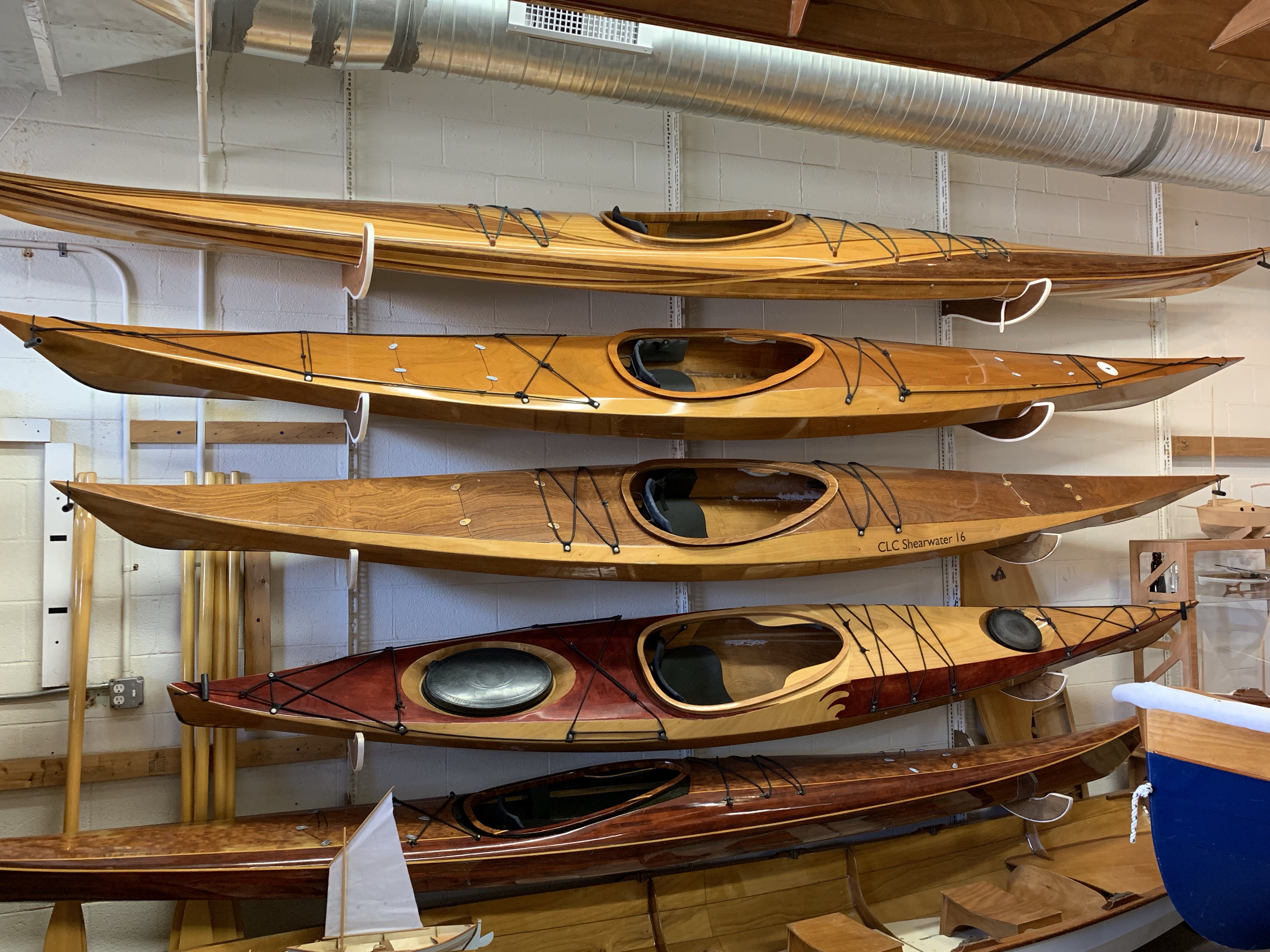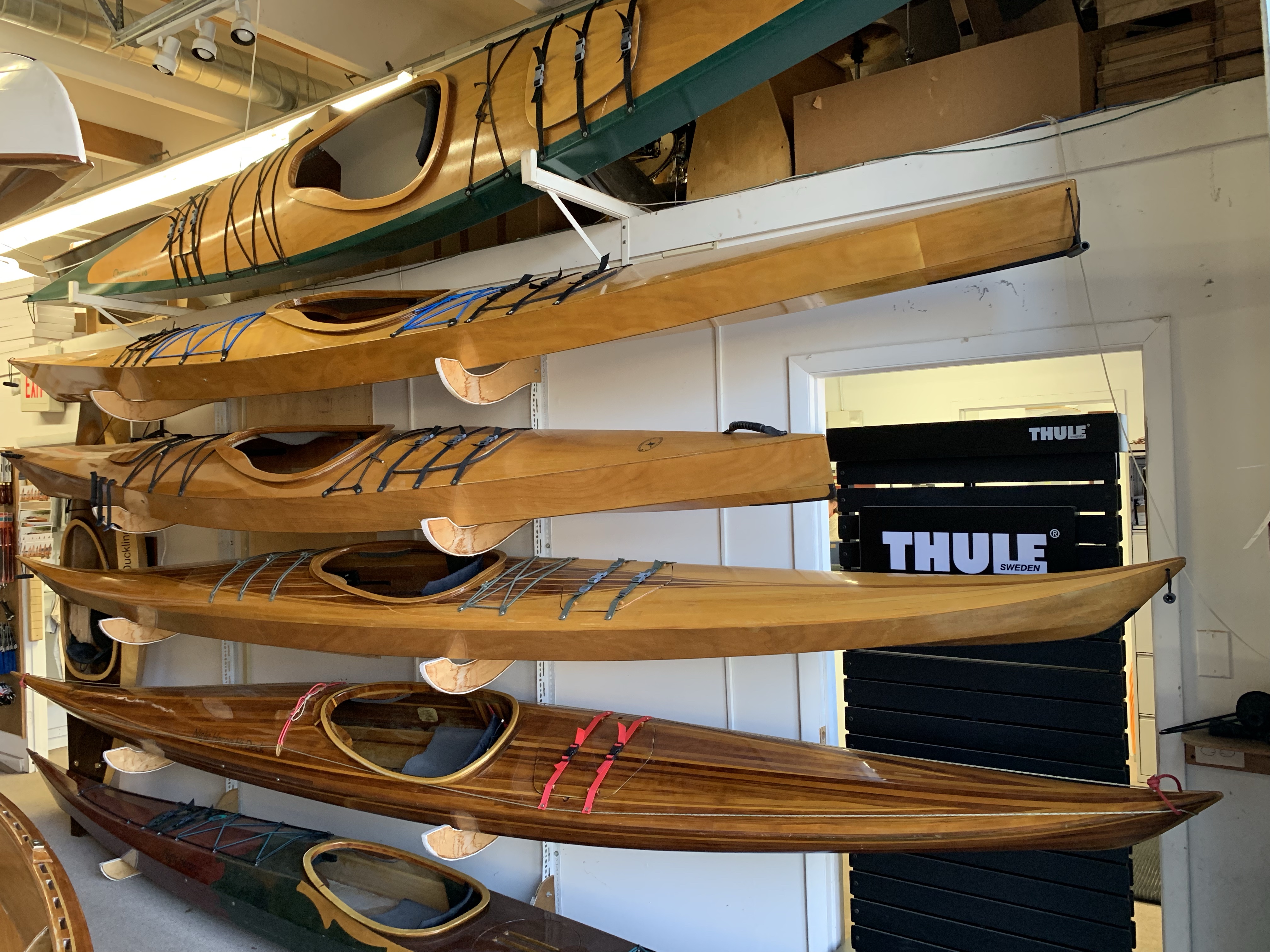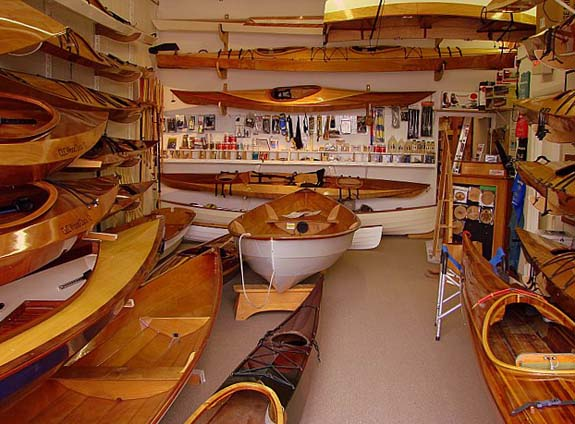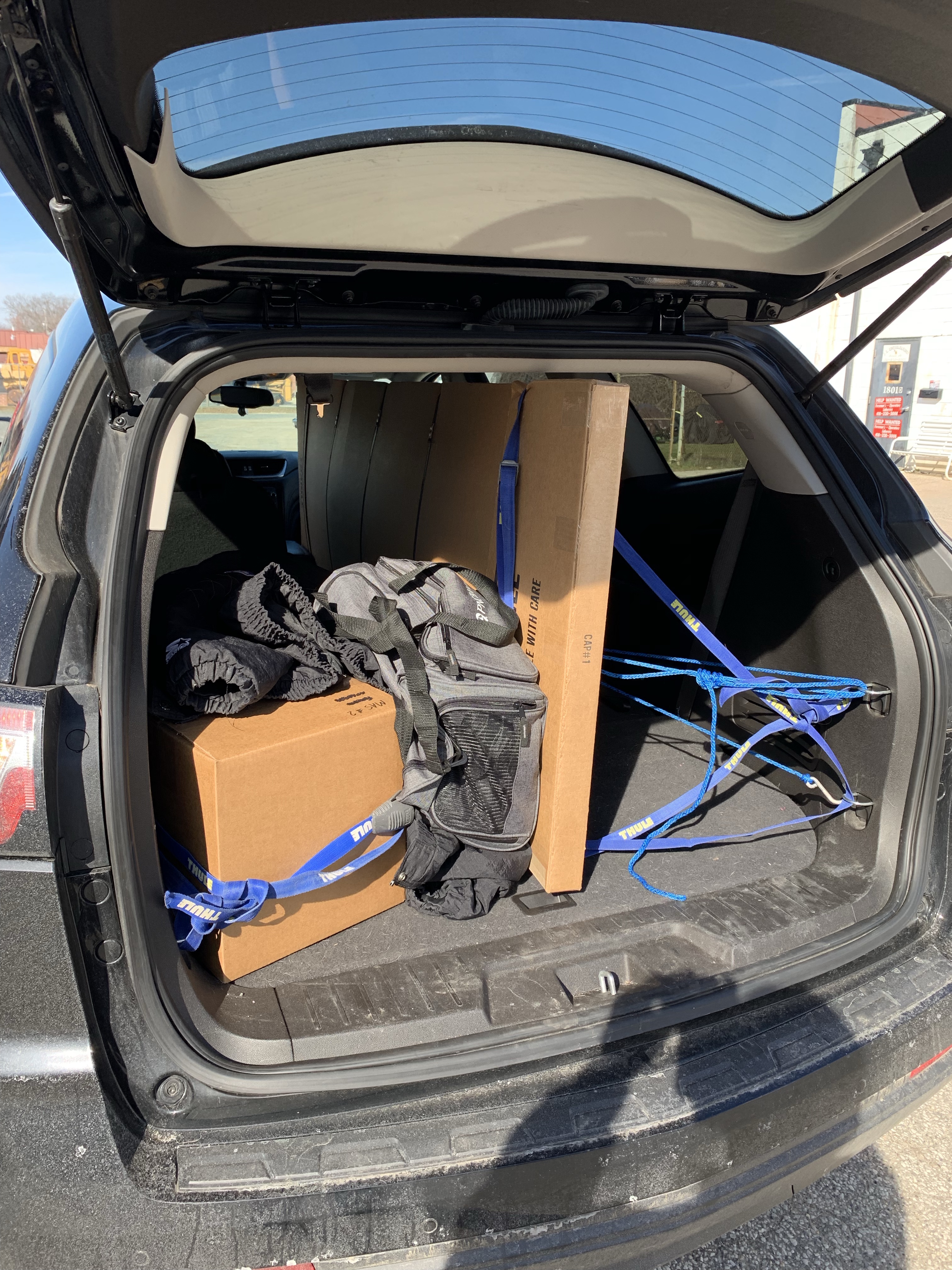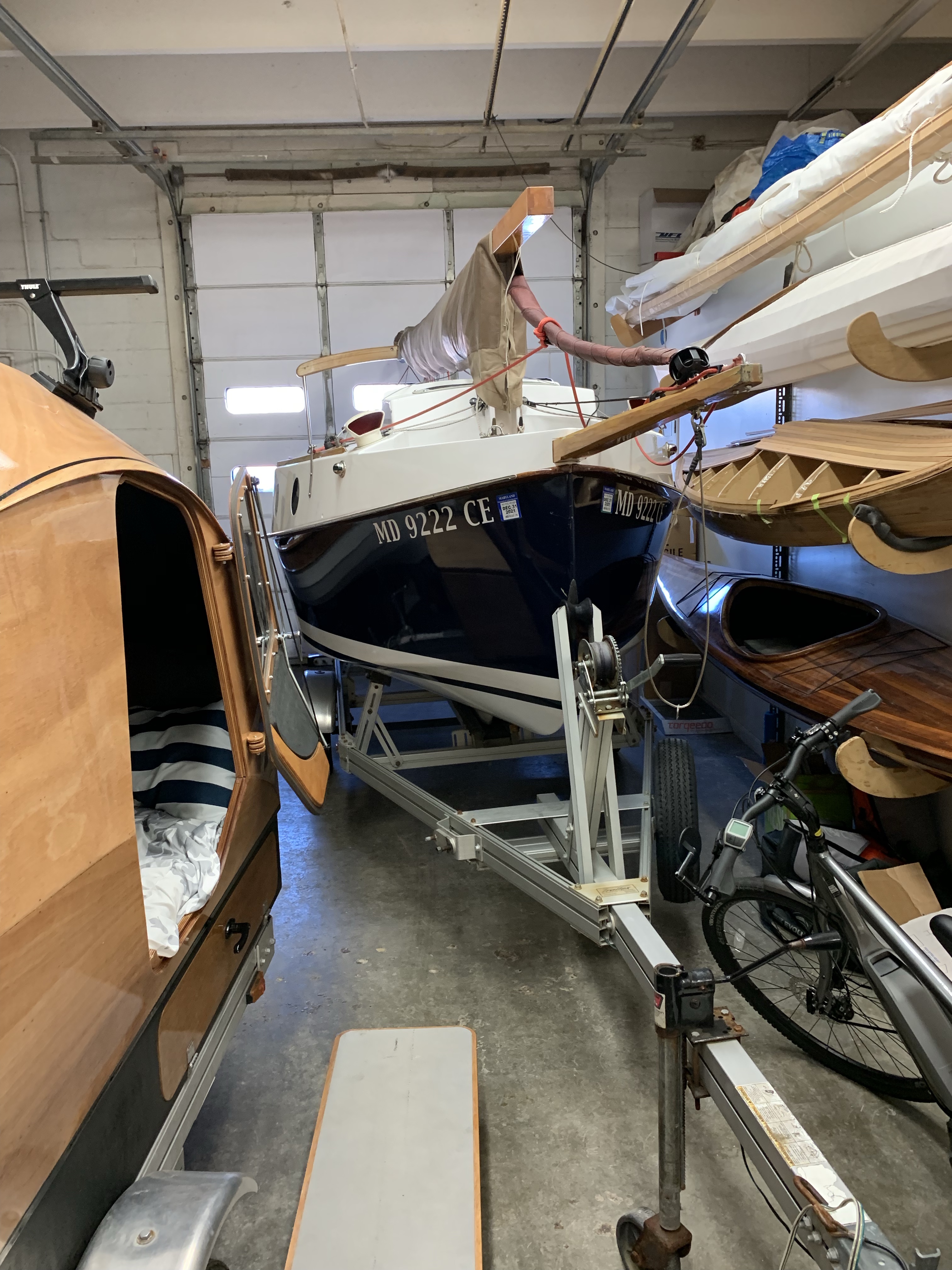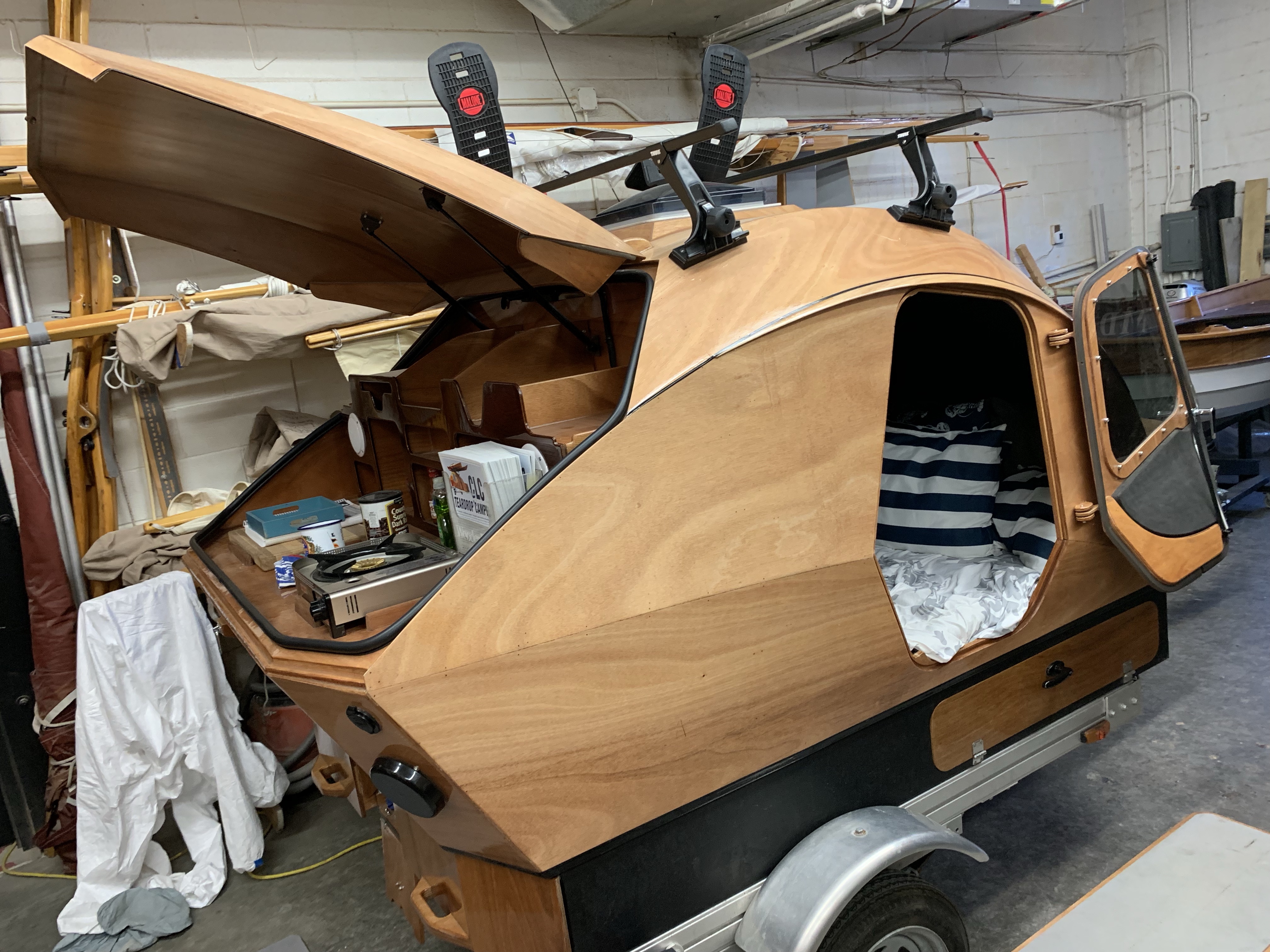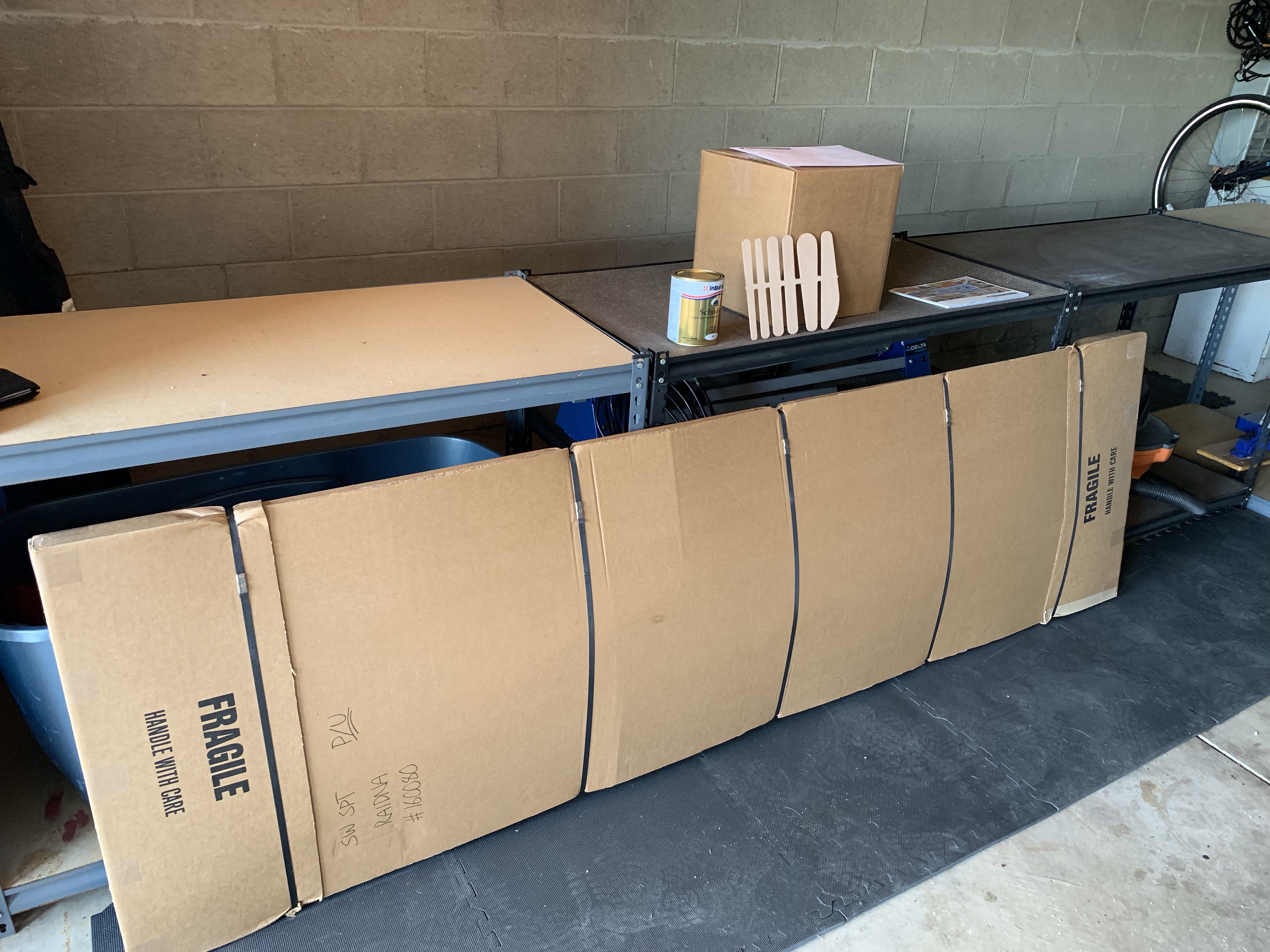The next step after glueing up the panels is to bevel the edges to allow for tight fitting joints when the panels are stitched together. There are basically two types of bevels, those on the ends of the bottom and side panels, and those along the length of all the hull and deck panels.
In this first post about bevels I will be showing how I went about the end panel bevels for the bottom and side panels. I started with the side panels as they looked a bit less tricky then the very curvy bottom panels.
In the diagram below the side panel ends are to be beveled to 75 degrees, starting from a 1/2″ in the end of the panel, leaving 1/2 the thickness of the plywood. The designer states that all angle are approximate, which is good because I’m not sure of a good way to measure.
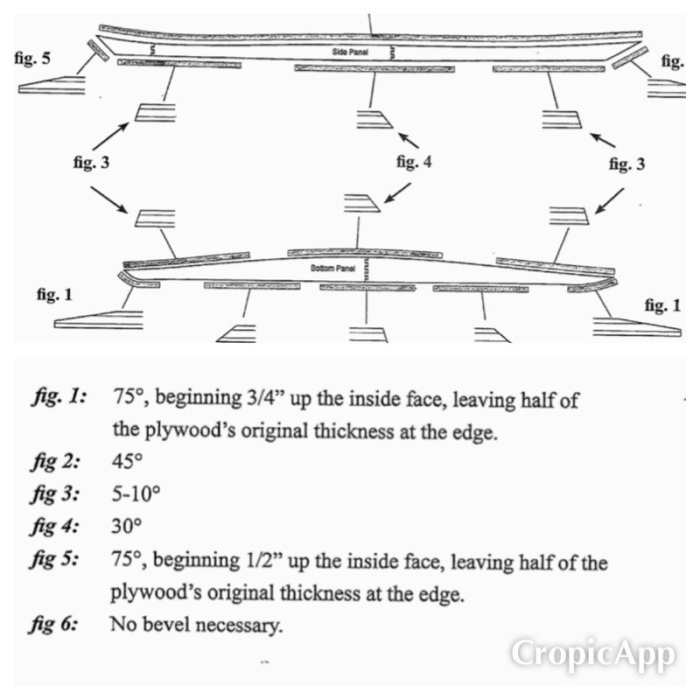
I did mark a reference line before planing, so that i could have a rough idea of how much to plane away.

I started planing at the edge of the panel, with a shallow set blade in my plane. After a few passes the glue line of the first ply was visible and a couple of passes later I seemed to be about halfway through. This put the glue line about 1/4″ in from the edge. Both ends of one side panel are shown below, I repeated for the other panel.
Feeling a little more confident I moved on to the bottom panels. The instructions called for 75% and a width of the bevel of 3/4″ so I made reference lines and planed away. Then smoothed up the bevel with the sanding block.
Here are a few more pictures of the completed ends of the bottom panels. I over did it just a touch on the right one below.

And two facing bottom panels and a side panel.

Next step is to bevel along the edges in preparation for stitching up the hull…






